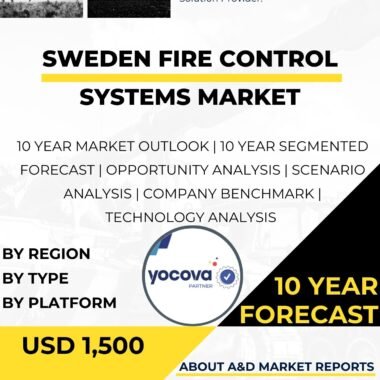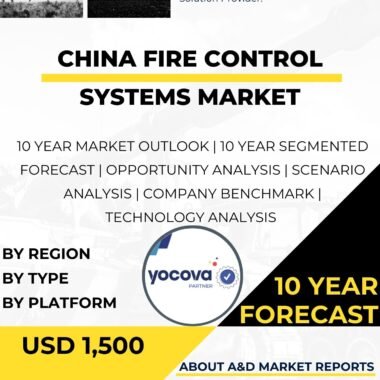Description
Japan Radar Market Overview
The radar market in Japan holds strong strategic importance within the country’s defense and security framework. Japan continues to strengthen its defense posture in response to evolving regional challenges. Radars support real-time surveillance, threat detection, and operational coordination. As a result, they remain essential across land, air, maritime, and space domains. Therefore, demand for advanced radar systems continues to grow as Japan modernizes its defense infrastructure.
Japan Radar Market Strategic Importance
Radars play a central role in maintaining national security and regional stability. They enable early threat identification and continuous monitoring of surrounding environments. Moreover, radars support decision-making by providing accurate and timely data. Japan relies on these systems to protect airspace, sea lanes, and territorial boundaries. Consequently, radar capabilities remain a core element of the country’s defense strategy.
Japan Radar Market Technology Landscape
The Japan radar market includes a wide variety of system types and technologies. Ground-based radars support fixed surveillance and early warning missions. Airborne radars enhance detection and tracking from aircraft platforms. Naval radars improve maritime awareness and threat response. In addition, space-based radars extend coverage and persistence. Advanced technologies such as electronically scanned arrays and synthetic aperture techniques improve accuracy and reliability. As a result, modern radar systems offer stronger performance across multiple missions.
Japan Radar Market Air Defense Applications
Air defense represents one of the most critical applications for radar systems in Japan. Ground-based radars provide early warning against airborne threats. These systems monitor aircraft movement and missile activity. Moreover, they support interception and defensive response operations. By delivering continuous airspace awareness, radars strengthen national air defense readiness. Therefore, they remain indispensable to Japan’s security architecture.
Japan Radar Market Maritime Surveillance Role
Maritime surveillance is another key driver of radar demand in Japan. Naval radars detect surface vessels and low-altitude threats at sea. These systems support maritime domain awareness and fleet protection. Additionally, they help secure shipping routes and coastal areas. Given Japan’s island geography, maritime radar systems play a particularly vital role. As a result, naval radar capabilities receive sustained investment and focus.
Japan Radar Market Ground and Land-Based Operations
Radars also support land-based defense and monitoring missions. Ground surveillance radars detect movement across borders and sensitive areas. These systems assist military operations and disaster response efforts. Furthermore, they improve situational awareness during emergencies. Therefore, land-based radars contribute to both defense and civil protection objectives.
Japan Radar Market Domestic Industry Contribution
Japan’s domestic defense industry plays a significant role in radar development. National manufacturers design and produce radar systems tailored to local requirements. Government agencies collaborate closely with industry and research institutions. This cooperation promotes innovation and long-term capability growth. As a result, Japan strengthens its indigenous radar production and technological independence.
Japan Radar Market Innovation and Advancements
Technological innovation continues to shape the radar market in Japan. Improved signal processing enhances detection accuracy. Miniaturization allows radars to be deployed on more platforms. Multi-function radars now support several missions simultaneously. In addition, digital integration improves system coordination. Therefore, modern radars deliver greater efficiency and flexibility than earlier generations.
Japan Radar Market International Cooperation
International partnerships also influence radar capability development. Japan works with allied nations to improve interoperability and shared standards. These collaborations support joint operations and information sharing. At the same time, Japan safeguards critical domestic technologies. As a result, the country balances cooperation with strategic autonomy.
Japan Market Challenges
Despite its progress, the radar market in Japan faces notable challenges. Development and maintenance costs remain high. Electronic warfare threats also pose growing risks to radar effectiveness. Adversaries may attempt jamming or deception techniques. Therefore, electronic protection measures remain essential. In addition, export controls can limit access to certain technologies and partnerships.
Japan Market Future Outlook
Looking ahead, adaptability and resilience will guide market development. Japan will continue to invest in advanced radar research and workforce skills. Enhanced electronic protection and system integration will remain priorities. Moreover, continued collaboration between government and industry will support innovation. As a result, the radar market will remain a cornerstone of Japan’s defense capabilities and long-term security strategy.




